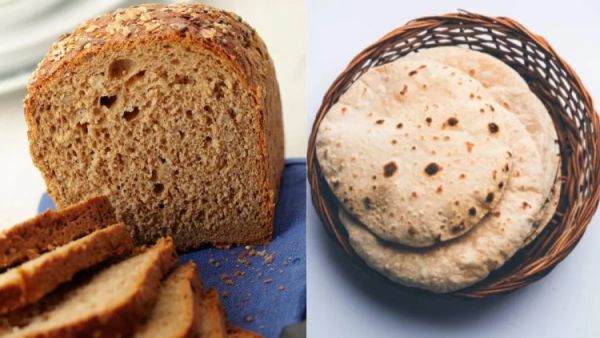Bread vs. Roti: When it comes to losing weight, people are often caught between two common carbohydrate sources: bread and roti. There is a lot of uncertainty because of the long-standing argument over these two basics. Although roti is thought to be the better choice because of its greater vitamin content, the distinction has become more hazy as healthier bread variations have emerged.

Due to its ease and nutritional advantages, bread is increasingly preferred over roti. Investigate the advantages and disadvantages of each to help you make an educated choice if you’re also unsure about which weight loss strategy is best.
Bread for Losing Weight
Bread is a processed food item with a high glycemic index since it is manufactured from refined flour and often includes yeast, preservatives, and added sugars. Given that some brown bread alternatives include caramel coloring additives, even healthy selections might be deceptive. Roughage, which is necessary to facilitate digestion, is eliminated during the refining process, and additional substances may counteract any possible health advantages.
Roti to Lose Weight
A mainstay in Indian homes, roti is said to be healthier than bread. When made with water and whole wheat flour, roti maintains its fiber content, which aids with bowel movement and digestion. When eaten in moderation as part of a balanced diet, a handmade roti is a healthy option since it is high in roughage, free of yeast, and a rich source of important vitamins, minerals, and dietary fiber.
Which Is a Healthier Option: Roti or Bread?
Although it also relies on dietary choices, roti is a better option for weight reduction because of its lower GI and nutritional advantages. Bread is inappropriate for diabetes and weight reduction due to its high glycemic index and added sugars. Its rapid digestion causes sugar to be released, which makes weight reduction difficult. On the other hand, roti is a better choice for weight reduction due to its high fiber and vitamin content. When choosing bread, choose whole grain, colorless types and eat in moderation.









